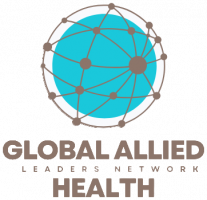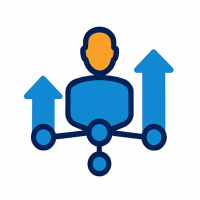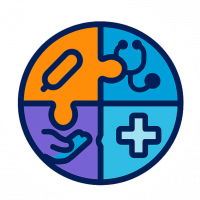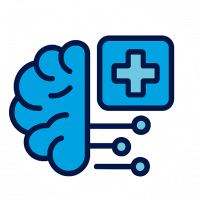Download PDF or read the HTML version below.
Executive Summary

Health systems worldwide are under unprecedented pressure: ageing populations, rising chronic disease, widening inequities, and a projected shortfall of 11 million health workers by 2030. Traditional, hospital-centered models of care are no longer sustainable.
A strategic shift is required. Health systems must pivot toward prevention, early diagnosis and treatment, rehabilitation, community-based self-management and improved end of life care. Allied Health1 is central to this shift, delivering scalable, cost-effective and evidence-based solutions that extend the reach and impact of healthcare teams while strengthening system resilience, and sustainability, and promote equity through accessible person centred care.
The opportunity cost of underutilising this workforce is significant: missed chances to reduce avoidable hospitalisations, improve outcomes, support independence, enable economic activity, and advance the Sustainable Development Goals (SDGs). Mobilising the allied health workforce is not optional, it is a global system imperative for achieving resilient healthcare and Universal Health Coverage (UHC).
Purpose and Vision
This agenda sets out a vision for a resilient, affordable, equitable, and future-ready health system where prevention, early access to diagnosis, treatment and rehabilitation and social capital building are recognised as essential foundations of care. Allied Health capabilities enable people to stay well, recover faster, maintain independence, remain in work or education and therefore reduce inequalities.
Achieving better health outcomes, advancing equity, and improving system efficiency requires recognising the full diversity of the health workforce.
Every discipline’s contribution must be understood and effectively integrated into global and national strategies. Allied Health professionals bring unique expertise in prevention, rehabilitation, and early intervention, working across sectors alongside other health professionals and carers. Elevating their contribution is essential to improving outcomes, building resilient, person-centred, and sustainable health systems.
1Allied Health – For the purposes of this work the term Allied Health is understood as it is defined within the relevant national context, acknowledging that’s its scope and composition may vary between Countries or Jurisdictions
Strategic Policy Imperatives
Mobilise Allied Health for System Sustainability

Position Allied Health as a cornerstone of prevention-focused, community-based care. This reduces reliance on acute and elective services, strengthens population health, and delivers cost-effective upstream solutions. Realising this potential requires data-driven, needs-based workforce and job planning to align skills with population complexity. This approach is essential to building a resilient, equitable, and efficient health system that meets current and future demands.
Embed Allied Health Leadership Across Health Systems

Systematically include Allied Health expertise in policy, planning, and service design. Leadership at all levels offers diversity of approach, alternative workforce solutions and ensures services are reoriented to improve population health and drive productive, resilient and sustainable healthcare.
Enable Full Scope of Practice Within Integrated Teams

Empower allied health professionals to amplify their work across traditional boundaries within integrated, team-based models. Utilise this insight and upstream intervention to lead pathway and digital transformation. This requires, removing regulatory barriers to full scope of practice, further develop and support advanced practice training and employment pathways across both generalist and specialist roles, and establish governance that support safe, full-scope practice.
Ensure Equitable Access in All Communities

Optimise access to allied health services across urban, rural, and remote settings to ensure communities have equitable access to Allied Health services. Invest in robust locally driven training pipelines, flexible workforce models, digital infrastructure, and service innovation to reduce disparities, build social capital and inclusive, healthier communities.
Harness Digital and AI Innovation

Leverage allied health pathway redesign through digital transformation, artificial intelligence, and rehabilitation technologies to expand allied health’s reach and impact. Strategic investment in infrastructure and technology, workforce training and job redesign is critical to building a digitally enabled, future-ready workforce in service and education.
Invest in Future-Ready Education and Career Pathways

Strengthen education and professional development to align with the evolving complexity of population needs, across clinical care, leadership, education and research. Optimise clinical education and training and build structured, equitable career pathways that enable every professional to thrive, drive innovation, support and train the next generation and lead high impact person-centred, preventative care.
Advance Applied Research and Global Collaboration

Prioritise cross-sector research and international collaboration to demonstrate the short, medium and long term impact of allied health interventions, share innovation, guide investment and align strategies for continuous improvement. Sustained global networks of Allied Health leaders amplify and organise the collective voice, share learning and accelerate reform worldwide.
A Global Call to Action

Global health systems are at a tipping point. Workforce shortages, rising demand, fiscal constraints and widening inequalities are exposing the limits of traditional models of care. Business as usual is no longer viable. Incremental change is no longer sufficient.
Allied Health is not an adjunct – it is a cornerstone of future sustainable health systems. Mobilising this workforce and leadership will determine whether countries can achieve UHC, reduce inequities, and build resilient healthcare for future generations.

Allied Health professionals bring unique, evidence-based capabilities in prevention, rehabilitation, early intervention, and community-based care – delivering scalable, cost-effective solutions that strengthen population health and reduce reliance on acute services.
The call to action is clear, time to act is now.
We value your feedback on the Position Paper. Please complete our feedback form.